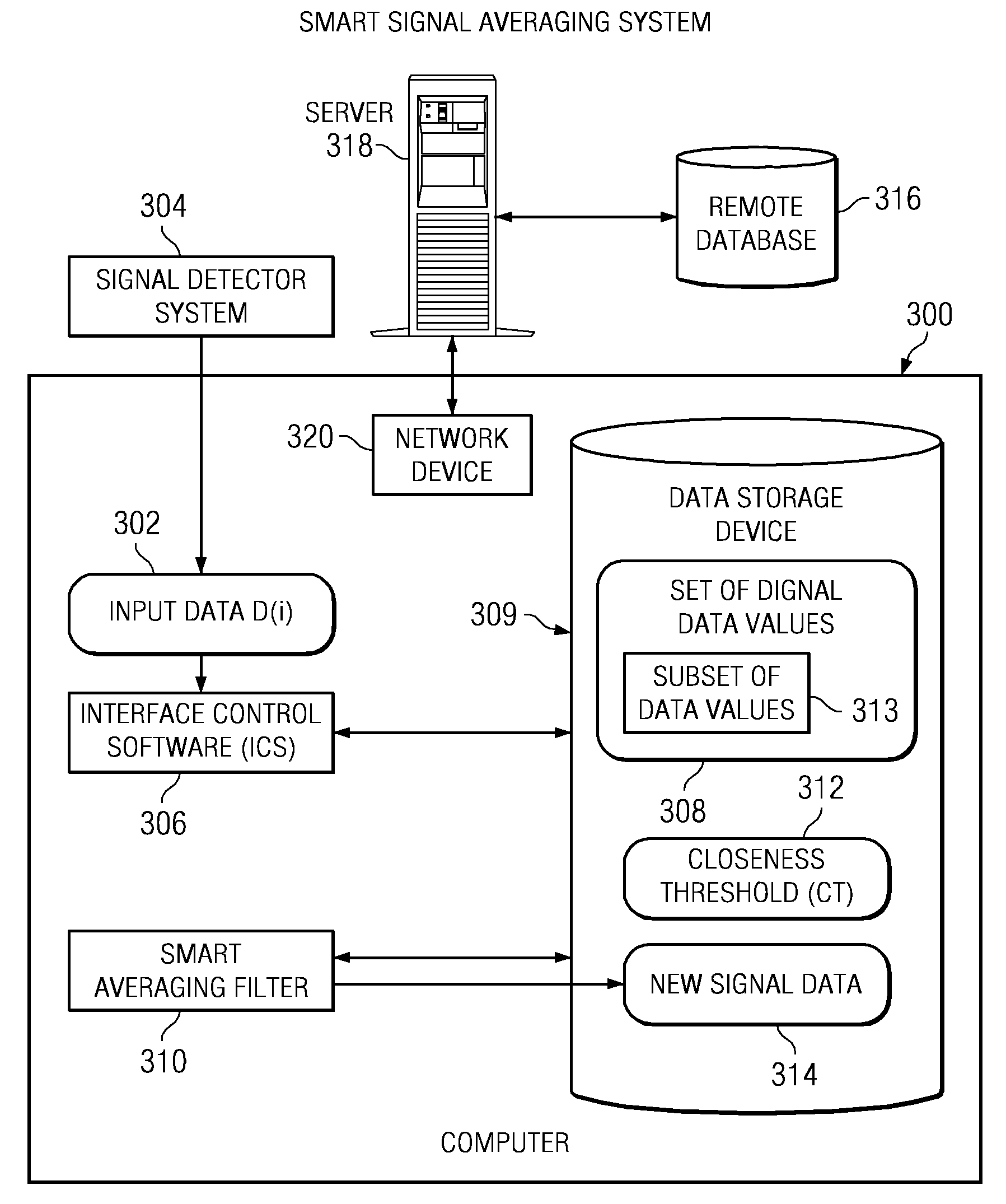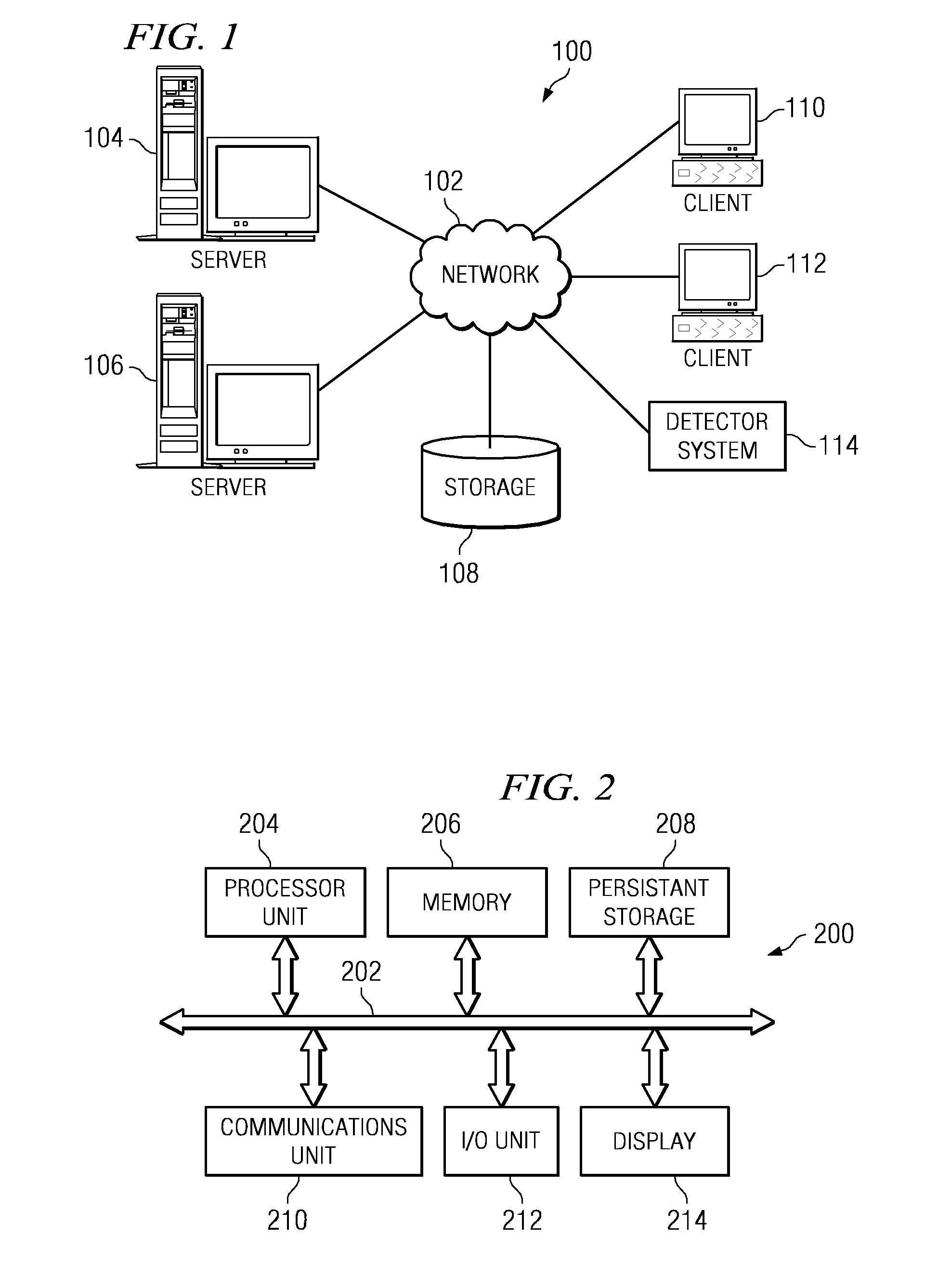Method and apparatus for smart signal averaging
a signal averaging and smart technology, applied in the field of signal processing, can solve problems such as equipment problems, noise or clutter in data signals captured by detectors, and noise or clutter addition, and achieve the effect of improving the signal-to-noise ratio
- Summary
- Abstract
- Description
- Claims
- Application Information
AI Technical Summary
Benefits of technology
Problems solved by technology
Method used
Image
Examples
Embodiment Construction
[0042]With reference now to the figures and in particular with reference to FIG. 1, an exemplary illustration of a data processing environment is provided in which advantageous embodiments may be implemented. It should be appreciated that FIG. 1 is only exemplary and is not intended to assert or imply any limitation with regard to the environment in which different embodiments may be implemented. Many modifications to the depicted environment may be made.
[0043]FIG. 1 depicts a pictorial representation of a network of data processing systems in which advantageous embodiments may be implemented. Network data processing system 100 may be a network of computers in which embodiments may be implemented. Network data processing system 100 contains network 102, which may be the medium used to provide communications links between various devices and computers connected together within network data processing system 100. Network 102 may include, but is not limited to, connections, such as wir...
PUM
 Login to View More
Login to View More Abstract
Description
Claims
Application Information
 Login to View More
Login to View More - R&D
- Intellectual Property
- Life Sciences
- Materials
- Tech Scout
- Unparalleled Data Quality
- Higher Quality Content
- 60% Fewer Hallucinations
Browse by: Latest US Patents, China's latest patents, Technical Efficacy Thesaurus, Application Domain, Technology Topic, Popular Technical Reports.
© 2025 PatSnap. All rights reserved.Legal|Privacy policy|Modern Slavery Act Transparency Statement|Sitemap|About US| Contact US: help@patsnap.com



